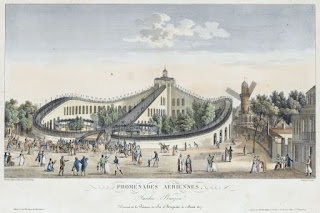I don't think it's hyperbole to call The Hate U Give the YA book of 2017. It was at number one on the New York Times Best Seller list for more than six months, and I don't think it has fallen below #2 since. It has deservedly won lots of awards already and two categories of the Goodreads Reader Awards 2017. I read it in August/September last year because I was going to seeAngie Thomas speak at Melbourne Writers Festival.
The Hate U Give is the story of Starr Carter who lives in a poor black area, Garden Heights, but attends a predominantly white school across town. Her life straddles the divide between the two.
As long as I play it cool and keep to myself, it should be fine. The ironic thing is though, at Williamson I don't have to "play it cool" - I'm cool by default because I'm one of the only black kids there. I have to earn coolness in Garden Heights, and that's more difficult than buying retro Jordans on release day.Early on in the book Starr witnesses her best friend Khalil be shot and killed by a police officer during a traffic stop.
Khalil stares at the sky as if he hopes to see God. His mouth is open like he wants to scream. I scream loud enough for the both of us.The rest of the book is about the fallout and repercussions of Khalil's murder.
The Hate U Give is a really powerful story and addresses the issues of race, drugs, poverty and injustice for black people in America really well, but I was surprised that the American gun culture wasn't really addressed specifically.
"Always some shit," he mumbles. "Can't have a party without somebody getting shot."Starr is 16 and she's seen two of her friends shot. Outside of a war zone I can only imagine one country where this is even possible.
When I was twelve, my parents had two talks with me. One was the usual birds and bees...... The other talk was about what to do if a cop stopped me.
Momma fussed and told Daddy I was too young for that. He argued that I wasn't too young to get arrested or shot.Wow, that is a talk that I would never even had considered with my son. Or that it could ever be necessary. But for Starr, and all the black kids like her, it is.
I'm used to gun shots, but these are louder, faster.In this PBS interview Angie talks about how she set out to make the political personal, and that growing up in Mississippi she didn't she any authors who looked like her. Angie Thomas has written a moving Author's Note at the end of the book outlining her motivations to tell this story, and its origins as a short story she wrote at university. Angie learned of Emmett Till when she was a young girl, but half a world away I've only heard of him in the past few years. Of course young black American men are still being killed in extraordinary numbers and in extraordinary circumstances. Black Lives do Matter.
Because of my advanced age there were a number of pop culture references that puzzled me. Right from the first page "Some rapper calls out for everybody to Nae-Nae.." So I texted Master Wicker. He knows it of course, and is mortified by my asking. "It's so horrible and so old". Ah yes, so old, so 2015. There was a bit of vocabulary that made me feel old and out of touch from time to time, but it in no way interfered with my enjoyment of the story, even if it did sound like another language at times! And I'm clearly not the only parent confused by such things.
I'm somewhat mortified that it has taken me so long to finish this post, but am glad of the push from #Femmeuary to get it done.














